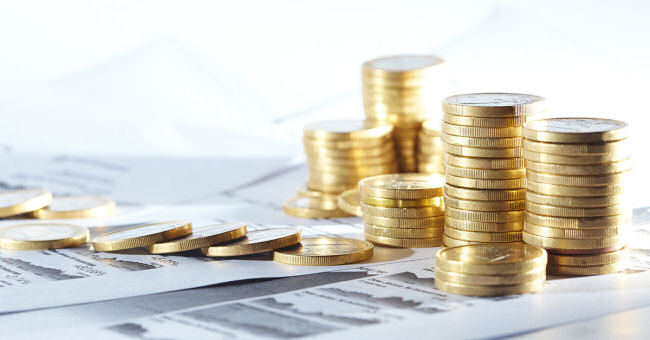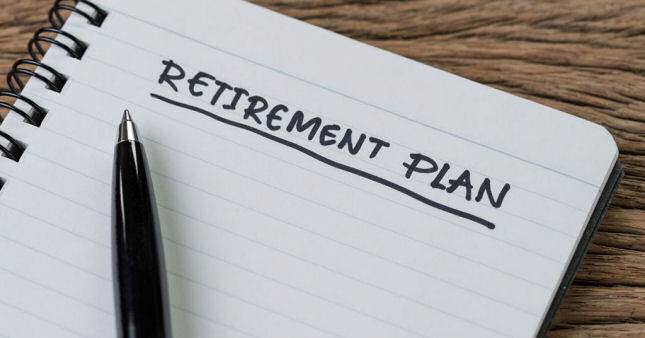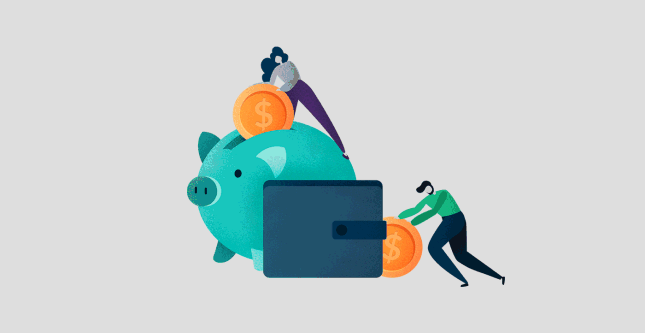Emergency funds: What they are and why you need them
What are emergency funds?
Emergency funds are money that you set aside in the event that something unexpected or catastrophic happens that prevents you from earning income for a prolonged period of time. Your funds must have high liquidity and should be deposited into an account that is insured by the FDIC so that you can access them when you need to do so.
Most financial experts recommend that people save at least three months’ worth of their expenses. Preferably, financial experts recommend that you save up to six months of your living expenses in your emergency savings. Having this type of account in place can give you greater financial security.
What are emergency savings used for?
Your emergency funds should provide for your needs in the event of an emergency. Some types of emergencies for which you might use your funds include the following:
- Job loss
- Medical emergency
- Unexpected home repairs
- Unexpected car expenses
- Unplanned travel expenses
Your emergency funds can also be used as additional retirement funds. If you do not use them for other events, you can use them to supplement your retirement income.
Unexpected expenses
In a survey of 12,000 households, the Federal Reserve found that 74% reported that they were doing average financially. However, 40% of the respondents stated that they would be unable to cover an unexpected $400 expense.
Career Builder found that 78% of Americans live paycheck to paycheck. Among people who make more than $100,000 per year, almost 10% report that they live from paycheck to paycheck. More than 25% of people do not save any money each month. If you do not set aside money in an emergency fund, you may go further into debt and struggle to make ends meet if you experience an unexpected event.
How much should you have saved for emergencies?
At a minimum, financial experts say that you should multiply your expenses by at least three months and save that amount as emergency funds. For example, if your monthly living expenses for your mortgage, car payment, insurance, food, utilities, and gas total $4,000 per month, you should have a minimum of $12,000 in funds saved.
Financial experts recommend that it is better for you to try to save six months’ worth of funds if you have a family who depends on your or if you work in a career that has a high rate of turnover or a high rate of injury. This can help you to get by if you suddenly lose your job. As you improve your ability to save, you should ultimately aim to set aside 12 months’ worth of your expenses in a liquid account.
Start by reviewing your living expenses both yearly and monthly to determine your monthly budget. Total your expenses for your rent or mortgage, utilities, transportation, insurance premiums, uncovered health care costs and food. This can give you an idea of how much you should save. You can also use an emergency fund calculator to figure out how much you should save for emergencies.

There are several factors that you should consider when you are determining the amount to save, including the following:
- Number of dependents
- Whether your income is secure or unpredictable
- Reasonable expectation of the cost of living
- An inventory of your investments and assets
How do I save for an emergency fund?
While it might seem difficult to save emergency funds, it is possible. Start by making a budget. You can begin with small goals and work up to long-term objectives. Figure out the amount of money to save each month. You can make it easier to save by choosing automatic deposits into your account.
Take any money that you receive from working extra hours, from tax refunds or from raises and add those amounts to your emergency funds. Use money management tools to identify areas in which you can cut costs. Aim to increase the amount that you save each month and consider adding additional sources of income.
Benefits for saving
There are multiple benefits to saving emergency funds. Emergency savings can help to keep you from going into debt. In many cases, people who experience unexpected events must either dip into their savings or finance them with added debt. Using emergency savings for these types of events is preferable.
Emergency savings also help you to cover unexpected expenses for your medical care, car, and home. They also can help to contribute to your retirement savings and add to your financial security. Finally, having these funds available can reduce your stress and help to improve your credit.
Where should you keep your emergency funds?
You should keep your emergency savings in an account that has high liquidity. The liquidity of an account refers to how quickly you can convert your assets into cash. Using a checking account or a money market account that comes with a debit card or checks is a good choice.
In addition to high liquidity, the account that you choose should also carry minimal risk. You should choose an account with high liquidity that is also covered by FDIC insurance. It should have good accessibility, have low minimum deposits, and few fees.
Some types of accounts that you could use to store your emergency funds include the following:
- Money market accounts
- CDs
- High-yield accounts
- Roth IRAs
- Combination of accounts
Money market accounts are similar to high-yield savings accounts because of their APYs and monthly fees, and they may offer debit cards or checks. However, you are limited to six withdrawals per month, and you may have to make a higher initial minimum deposit.

CDs or certificates of deposit require you to keep your money in them for a set time period. They may enjoy a higher APY than a money market fund and normally do not charge any maintenance fees. However, if you withdraw money from a CD before its maturity date, you may have to pay a penalty. A percentage of the interest that you have earned may be charged as an early withdrawal penalty.
High-yield accounts earn a high APY and normally charge lower fees than a savings account. High-yield accounts also have lower minimum balance requirements. If you make more than six withdrawals in a month, you may be charged an excess withdrawal penalty.
A Roth IRA is a type of IRA in which you make your contributions on an after-tax basis. For this type of account, you can withdraw only the contributions. You will have the benefit of not being assessed income taxes on your withdrawals. Roth IRAs typically earn a higher rate of return than a savings account or a CD.
Setting up an emergency fund
To create an emergency fund, start by setting your short- and long-term goals. Make a living expenses list. Create your monthly budget and use an emergency fund calculator to determine how much you should save.
Create the account in which you will deposit your savings. Make certain that it has high liquidity and that it is a separate account that you use for emergency funds alone. Set up automatic transfers from your checking account directly to your emergency savings account. You might be able to have your employer split your check so that your employer automatically deposits a portion of your earnings into your emergency savings account.
Adjust emergency funds
There are several situations in which you should make an adjustment to your emergency funds. You should adjust the amount that you save when you only have a single source of income. You should also adjust them when you are starting a family or experience a change in your family circumstances such as taking care of a relative.
If you have seasonal income, you should adjust the amount that you save and create a monthly budget that reflects the seasonal nature of your earnings. If you are saving for a goal such as to make a down payment on a house, both your monthly budget and your savings amount should reflect it.
Try to avoid saving too much in an emergency fund. When you do, you will be saving money at lower rates of interest. This could actually mean that you lose money over time. Instead of contributing too much to an emergency fund, you should add to your tax-advantaged retirement accounts like your 401(k) or IRA.
Making a living expenses list, creating a monthly budget, and making saving a routine part of your life are important. Emergency savings can help you to get through rough times relatively unscathed. Investing through M1 Finance can also help you to reach your goals and to achieve financial security.
Trust M1 Finance
M1 Finance empowers you to manage your money in a more effective way so that you can potentially earn more. It automates the process of investing so that you can make good financial habits effortlessly. Every penny that you invest through M1 is put to work by offering fractional shares for better returns.

M1 Finance is a FINRA broker-dealer. We are a member of the SIPC, so the securities in your investment accounts are protected up to $500,000. SIPC insurance does not protect against any loss in the value of your securities, but it does protect you against certain losses that may be caused by other events. In addition, our clearing firm has purchased supplemental insurance if the SIPC limits are exhausted.
Save with M1 today
When you open an investment account with M1 Finance, you choose the securities that you want to include in your portfolio. If you are uncertain about how to build a portfolio that reflects your risk tolerance, time to invest, and your unique financial goals, you can instead choose a portfolio that has been created by experts to meet your needs.
With the investing platform, your ability to invest will be straightforward. You can benefit from its automation anytime, anywhere. M1 does not charge any commissions or management fees, which can allow your money to grow even more over time.
The site also uses automatic dividend reinvestment and dynamic rebalancing to keep your portfolio aligned with your goals at all times. M1 simplifies the process of investing, helping you to grow your money effortlessly.
As an account that is insured by the FDIC and has high liquidity, M1 has the ability to set up an account for your emergency funds.

